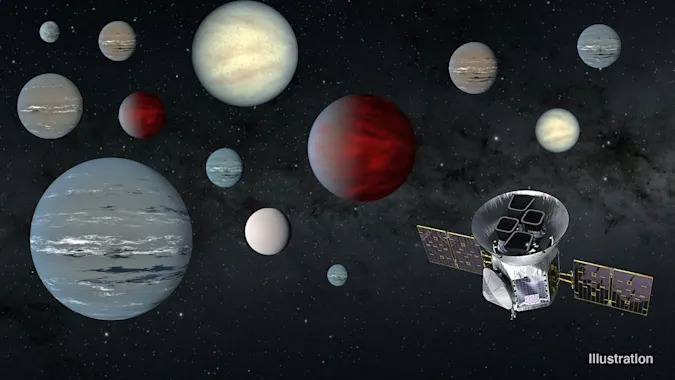
NASA has revealed that the Transiting Exoplanet Survey Satellite (TESS) launched in 2018 has discovered 2,200 potential outer planets over two years. Considering that the original forecast was 1,600 over two years, it is a calculation that new discoveries were made at 1.4 times the speed.
TESS discovers planets in a way called transport. The transport method observes a phenomenon in which an orbiting planet passes in front of a star and decreases in brightness to block light. Although the change in light intensity is sometimes less than 0.1%, TESS’s four high-sensitivity detectors boast the ability to discriminate.
Of the 2,200 discovered planets, some of the rare ones were included. For example, a planet named TOI-700d is a rocky planet similar in size to Earth located astronomically close to the solar system, just over 100 light years old. Moreover, it is expected that there is liquid water on the surface.
On the other hand, the planet LHS3844 b is a very short-period planet that orbits the red dwarf LHS 3844 at a fairly close location of 50 light years. This is also quite close to Earth, but since it is close to a red dwarf star with the same orbital period, it can be said that the surface temperature reached 530 degrees Celsius.
TOI 849 b, 700 light-years away, was originally supposed to be a gaseous planet with a thick atmospheric layer like Jupiter, but because it was close to a star, it was believed to be a planet that was exposed without forming an atmospheric layer from the beginning because the gas was blown away.
There are some features that are very different from the planets of the solar system simply because they are outer planets, and it is no different that the universe is a world that we do not know. TESS has found 2,200 planetary candidates, but there are still around 120 confirmed as planets by investigation. Even if planetary candidates are discovered one after another, they remain candidates until analysis, but NASA plans to conduct detailed observations and research with future space observation devices such as the James Webb Space Telescope. Related information can be found here.


















Add comment